64 kinds of national treasures, calligraphy and paintings and objects that China permanently bans exhibitions abroad! (The first episode)
When you click on this blog post, you are the luckiest, because in this life you can live to see these 64 mysterious national treasures of the world, today let Teacher Lin Lan lead everyone to appreciate them one by one!
First episode
The following 64 national treasure-class cultural relics were selected by the China Cultural Heritage Administration based on the opinions of local cultural relics departments and relevant experts, and the "Catalog of the First Batch of Cultural Relics Prohibited to Go Overseas (Border) Exhibition" was issued, stipulating that these 64 national treasures are permanently prohibited from going abroad exhibition.
1. Painted pottery jar with stork fish and stone axe
It belongs to the Neolithic Yangshao culture type. It was unearthed in Yan Village, Linru County, Henan Province in 1978, and is now in the National Museum of China. Painted pottery, 47 cm high and 32.7 cm diameter. The pottery jar is painted with a stork carrying a fish, and a stone axe is erected next to it.
2. Tao Yingding
It belongs to the Neolithic Age and was unearthed in Taipingzhuang, Huaxian County, Shaanxi Province in 1957. The height is only 36 cm, but it looks mighty and majestic. The eyes of the eagle are wide open, the whole body is clean and undecorated, and the beak is a powerful hook. It is now in the National Museum of China.
3. Stepmother Wu Tongding
It belongs to the late Shang period (about 14th century BC-11th century BC), unearthed in Wuguan Village, Anyang City, Henan Province in 1939. Also known as the "Step-Mother Wu Dafang Ding", it is 133 cm high, 110 cm long, 79 cm wide, and weighs 832.84 kg. Now in the collection of the National Museum of China.
4. Li Gui
It belongs to the early Western Zhou Dynasty and was unearthed in Lintong, Shaanxi in 1976. It is the earliest Western Zhou bronze ware ever discovered. It is a sacrificial vessel made by Yousi (official name) Li in the period of King Wu. It is 28 cm high and 22 cm in diameter. Now in the collection of the National Museum of China.
5. The Big Ding
It was unearthed in Li Village, Meixian County, Shaanxi Province during the period of King Kang during the Western Zhou Dynasty. The Great Yuding Ding is a large-scale ware among the existing Western Zhou bronze wares. Its shape is dignified, stable, vigorous and majestic, and it is a treasure in the world. Now in the collection of the National Museum of China.
6. Guo Jizi White Plate
It belongs to the Western Zhou Dynasty and was unearthed in Guochuansi, Guozhen, Baoji, Shaanxi during the Daoguang Period of the Qing Dynasty. This plate was unearthed during the Daoguang period and was used by local farmers to feed horses. Later, the county magistrate used it as his own.
After several turbulences, this plate was found by Liu Mingchuan and cherished extremely. In the following decades, there were many people who coveted this dish, and Liu's descendants buried the dish heavily in the ground to avoid other places. After the liberation, Liu Su dug out this dish and dedicated it to the country. Since then, Guo Jizi's white plate has been able to replay its splendor for the world to appreciate.
Now in the collection of the National Museum of China.
7. Ming Dynasty
Unearthed in Dingling, Changping County, Beijing in 1957. The pearls, gems and weights on the crown are not equal. The top one has 128 gems and the least 95 gems; the maximum number of pearls is 5449, the minimum is 3426, the heaviest is 2905 grams, and the lightest is 2165 grams. Now in the collection of the National Museum of China.
8. Turquoise inlaid ivory cup
It belongs to the Shang Dynasty and was unearthed from the Tomb of Fuhao in Yinxu, Anyang City in 1976. This ivory cup is 30.5 cm high and is made of ivory roots, which is quite original because of its material shape. Now in the collection of the National Museum of China.
9. Jinhou Suzhong
It belongs to the period of King Li of the Western Zhou Dynasty. It was unearthed in 1992 from Tomb No. 8 of the Tomb of Jinhou Cemetery in Quwo, Shanxi. There are inscriptions on it, all carved with sharp tools. The marks of the knife are very obvious. The inscriptions can be connected together. They fully record the eighth day of the first month of the 33rd year of Zhou Li (846 BC), Jin Hou Su was ordered to kill Su Yi The whole process. Now in the collection of Shanghai Museum.
10. Da Keding
It belongs to the late Western Zhou Dynasty and was unearthed in Ren Village, Famen Town, Fufeng, Shaanxi in 1890 (the 16th year of Guangxu in the Qing Dynasty). When King Xiao of the Western Zhou Dynasty was named Ke, a nobleman was cast to worship his grandfather. Now in the collection of Shanghai Museum.
11. Taibaoding
In the early Western Zhou Dynasty, it was unearthed in Liangshan, Shouzhang County, Shandong Province during the Daoguang Period of the Qing Dynasty. There are ridges and patterns on the body, and the three characters "Taibao cast" inside the abdomen. This Taibao is the assistant to King Zhou Cheng's Zhao Gongxiu. Now in Tianjin Museum.
12. Vermillion lacquer bowl unearthed in Hemudu
It belongs to the Neolithic Age and was unearthed in 1977 at the Hemudu site in Zhejiang Province. The outer wall has a layer of vermilion paint (slightly peeling off), slightly shiny. Now in the collection of Zhejiang Provincial Museum.
13. The King of Jade Cong Unearthed in Liangzhu
It belongs to the Neolithic Age. When it was unearthed, it was placed flatly at the bottom left of the tomb owner's Guan Gu. It was a sacred and noble jade ritual vessel. Now in the collection of Zhejiang Provincial Institute of Cultural Relics and Archaeology.
14. Crystal cup
During the Warring States Period, the Warring States Tomb was unearthed in Shitang Village, Banshan Town, Hangzhou in 1990. The plain surface has no patterns and is transparent. The surface of the vessel is polished, and the center and bottom of the vessel are naturally spongy crystals. This cup is a practical utensil made of high-quality natural crystal, which is rare in China. Now in the collection of Zhejiang Provincial Institute of Cultural Relics and Archaeology.
15. The copper ban unearthed in Xichuan
In the middle of the Spring and Autumn Period, Xiasi, Xichuan, Henan was unearthed in 1978. This is the earliest bronze ware found in the era of lost wax casting in our country so far. Its craftsmanship is superb and complex, which is breathtaking. Now in the collection of Henan Museum.
16. Lotus and Crane Copper Square Pot
Mid Spring and Autumn. The various additional decorations with cover, ears, and ring feet, the center of gravity on the lower abdomen, and all over the body, not only create exceptionally magnificent decorative effects, but also reflect important changes in the aesthetic concept of bronze art during the Spring and Autumn Period. This pot was originally a pair, one is now in the Beijing Palace Museum, and the other is in the Henan Provincial Museum.
Today’s first episode is here, the next episode will be more exciting, continue...
64 kinds of national treasures, calligraphy and paintings and objects that China permanently bans exhibitions abroad! (The second episode)
First episode
Episode Four
Lin Lan’s calligraphy and painting education, focusing on calligraphy and calligraphy research and teaching, thank you!







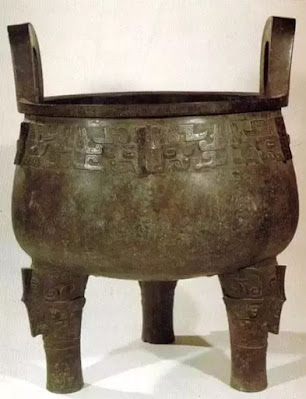


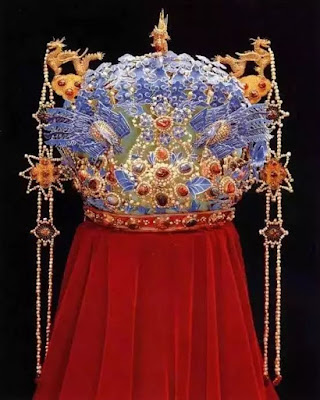

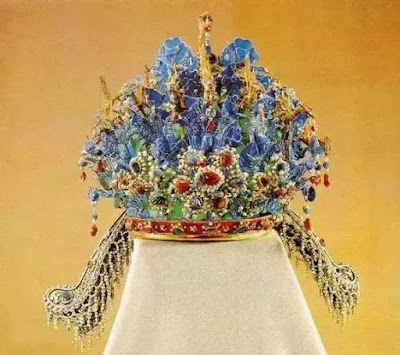
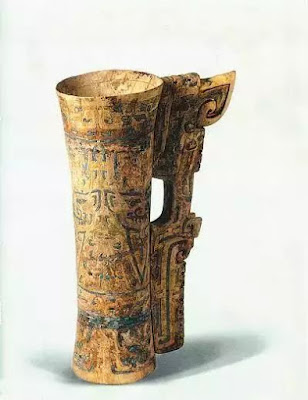

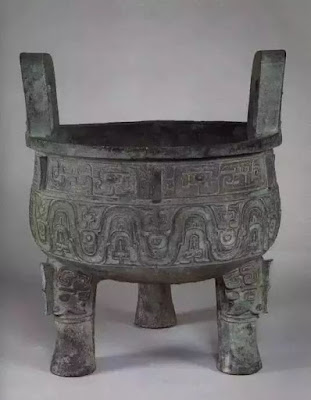


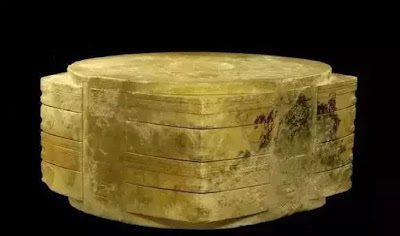














No comments: